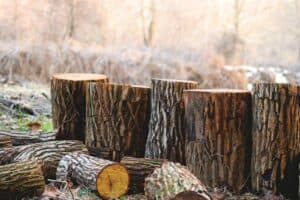Nature’s Guardian: The Art and Science of Tree Care
Key Takeaways
- Understand the importance of tree care for both safety and environmental health.
- Learn about common tree problems and practical solutions.
- Discover best practices for maintaining healthy trees in urban and rural settings.
- Recognize when professional help is necessary.
Table of Contents
- Introduction to Tree Care
- Common Tree Issues and How to Address Them
- The Environmental Impact of Healthy Trees
- Essential Tree Maintenance Techniques
- When to Call in Professionals
- Conclusion
Introduction to Tree Care
Trees have long stood as sentinels in our landscapes, integral to ecological balance and community well-being. These towering giants are aesthetically pleasing and contribute substantially to air purification, temperature regulation, and carbon sequestration. However, with urban expansion and environmental changes, the need for vigilant tree care has never been more acute. Proper management ensures trees thrive, offering their myriad benefits without harming their surroundings.

The complexities of Tree Removal in Rippon highlight the diverse approaches required to maintain tree health and safety. Attention to detail can make all the difference whether you’re dealing with diseased branches in a busy metropolitan park or stately oaks in rural areas. By understanding key care principles, you can support these natural guardians effectively while enhancing community safety and environmental health.
Common Tree Issues and How to Address Them
Trees face challenges that can undermine their health if left unchecked. Among the most prevalent issues are pest infestations, which see creatures like aphids, borers, and caterpillars nibbling at leaves and boring into barks. These pests often act as vectors for diseases, spreading infections like Dutch elm disease or sudden oak death. Other threats include environmental stressors such as drought, soil compaction, and pollution that can exacerbate the decline of tree health.
Tackling these issues begins with vigilance. Frequent inspections can assist in identifying early indications of diseases or infestations, enabling prompt treatment. Organic methods like diatomaceous earth or neem oil can be efficient and eco-friendly for pest management. Additionally, introducing natural predators like ladybugs can effectively reduce pest populations. Comprehensive guides provided by resources such as the extension service offer insights into addressing these problems, ensuring your approach is informed by expert recommendations.
The Environmental Impact of Healthy Trees
The symbiotic relationship between trees and the environment cannot be overstated. Healthy trees function as natural air filters, absorbing pollutants like sulfur dioxide, ammonia, and nitrogen oxides, thus improving air quality. Shade’s cooling effects can substantially reduce urban heat island effects, lowering energy costs and improving urban life quality during sweltering summers.
The ecological tapestry is further enriched as trees serve as essential habitats for countless species. Birds, insects, and mammals rely on trees for food and shelter, adding to the biodiversity that keeps ecosystems resilient. Meanwhile, roots stabilize the soil, reducing erosion and maintaining water quality by filtering runoff before it enters waterways. Advanced research underscores these environmental benefits of trees, reinforcing the importance of keeping our trees vibrant and robust.
Essential Tree Maintenance Techniques
Adopting a regimen of essential maintenance practices is crucial to maintaining tree health. Pruning ranks high on the list, removing dead or diseased branches that could otherwise become hazardous during storms. Thoughtful pruning enhances growth by allowing sunlight and air to penetrate inner foliage, promoting a healthier, more balanced tree structure.
Mulching is another invaluable technique, offering moisture retention, temperature regulation, and nutrient enrichment to the soil. A layer of mulch also prevents weed growth, which can compete with trees for vital resources. Fertilization, applied judiciously, boosts nutrients, especially in nutrient-poor soil conditions. Employing seasonal care tips like winter pruning and summer mulching bolsters tree resilience against environmental stressors. Regularly examining your tree care toolkit ensures you have the correct implements to make these tasks easier and more effective.
When to Call in Professionals
While many tree care activities can be conducted with DIY fervor, certain situations demand the expertise of seasoned professionals. A tree with extensive rot, significant lean, or proximity to power lines should not be trifled with, as the potential for injury or damage is high. In such cases, hiring certified arborists is advisable; these professionals are equipped with the knowledge and tools to assess and mitigate risks safely.
Arborists can offer tailored advice on species-specific care, ensuring trees are pruned, treated, or removed following the best practices. Their services often extend to emergency care after storms, stabilizing damaged trees, and providing a thorough assessment. Recognizing when a professional is needed protects trees, property, and people nearby, ensuring continued harmony within our green spaces.
Conclusion
Trees are vital, living monuments in our environments, and their ongoing care is a responsibility shared by all who value their multifaceted contributions. By deepening our understanding of common issues and embracing proven maintenance techniques, we become active stewards of the natural world. With vigilance and, when necessary, professional guidance, we can ensure that trees continue to flourish, standing as enduring testaments to the benefits they bestow upon the world.

